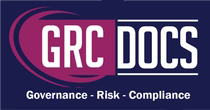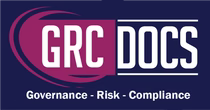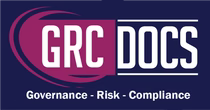NIST Cybersecurity Framework Toolkit | Complete Guide
Introduction
In the digital age, safeguarding information is more important than ever. Cyber threats are constantly evolving, and businesses need to be proactive in protecting their data. That's where the NIST Cybersecurity Framework comes in. Developed by the National Institute of Standards and Technology, this framework provides a flexible and practical approach to managing cyber risks. In this article, we'll break down the NIST Cybersecurity Framework and offer a toolkit to help you implement it effectively.

Understanding The NIST Cybersecurity Framework
The NIST Cybersecurity Framework is a set of guidelines that help organizations manage and reduce their cybersecurity risks. It’s designed to be used by businesses of all sizes, from small startups to large enterprises. The framework is composed of five core functions: Identify, Protect, Detect, Respond, and Recover. These functions provide a high-level, strategic view of the lifecycle of an organization's management of cybersecurity risk.
Core Functions
-
Identify: The Identify function is about understanding your organization's environment. This includes knowing what assets you have, who has access to them, and what risks are involved. By identifying your assets and risks, you can prioritize efforts to protect your business.
-
Protect: The Protect function involves developing and implementing safeguards to ensure critical infrastructure services are delivered. This includes implementing access controls, training staff on cybersecurity best practices, and maintaining data security.
-
Detect: Detect is about identifying potential cybersecurity events in a timely manner. This involves monitoring systems, detecting anomalies, and ensuring that detection processes are consistent and effective.
-
Respond: The Respond function involves taking action once a cybersecurity incident is detected. This means having a response plan in place, communicating with stakeholders, and mitigating any damage.
- Recover: Finally, the Recover function focuses on restoring services and capabilities after a cybersecurity incident. This includes recovery planning and improvements to processes to prevent future incidents.
7 Implementing Steps For NIST Cybersecurity Framework
Now that you have a basic understanding of the NIST Cybersecurity Framework, it's time to implement it in your organization. Here's a step-by-step guide to help you get started.
Step 1: Prioritize and Scope
Begin by identifying your organization's priorities and objectives. Determine which assets are most critical to your operations and assess the potential impact of a cybersecurity incident on these assets.
Step 2: Orient
Next, develop a comprehensive understanding of your organization's systems, processes, and relationships. Identify the resources needed to manage cybersecurity risks and align them with your organization's priorities.
Step 3: Create a Current Profile
Assess your current cybersecurity posture by evaluating how well your organization is performing in each of the five core functions. This will help you identify gaps and areas for improvement.
Step 4: Conduct a Risk Assessment
Perform a thorough risk assessment to identify potential threats and vulnerabilities in your organization's systems. This assessment will help you understand the likelihood and impact of various risks and prioritize your efforts accordingly.
Step 5: Develop a Target Profile
Based on your risk assessment, create a target profile that outlines your desired cybersecurity posture. This profile should reflect your organization's priorities and risk tolerance.
Step 6: Determine, Analyze, and Prioritize Gaps
Identify the gaps between your current and target profiles. Analyze these gaps to determine their root causes and prioritize them based on their potential impact on your organization.
Step 7: Implement Action Plan
Develop and implement an action plan to address the identified gaps. This plan should include specific steps, timelines, and resources needed to achieve your target cybersecurity posture.
Cybersecurity Best Practices
While implementing the NIST Cybersecurity Framework, it's essential to follow some best practices to ensure your efforts are effective and sustainable.
-
Regularly Update and Patch Systems: Keeping your systems up-to-date is crucial for maintaining cybersecurity. Regularly update software and hardware to protect against known vulnerabilities and reduce the risk of cyberattacks.
-
Train Employees: Employees are often the first line of defense against cyber threats. Provide regular training on cybersecurity best practices and ensure they understand the importance of following security protocols.
-
Monitor and Analyze Network Traffic: Regularly monitor network traffic to identify unusual patterns or potential threats. Use intrusion detection systems and other tools to help identify and respond to cybersecurity incidents.
-
Develop an Incident Response Plan: Having a well-defined incident response plan is essential for minimizing the impact of a cybersecurity incident. Ensure your plan includes clear roles and responsibilities, communication protocols, and steps for mitigating damage.
- Conduct Regular Audits and Assessments: Regularly assess your organization's cybersecurity posture to identify areas for improvement. Conduct audits and assessments to ensure compliance with industry standards and best practices.
Cyber Risk Management
Effective cyber risk management is key to implementing the NIST Cybersecurity Framework. By understanding your organization's risk profile and aligning your cybersecurity efforts with your business objectives, you can better protect your assets and ensure a resilient cybersecurity posture.
-
Establish a Risk Management Process: Develop a risk management process that includes identifying, assessing, and prioritizing risks. This process should be integrated into your organization's overall risk management strategy.
-
Involve Stakeholders: Involve key stakeholders in the risk management process to ensure a comprehensive understanding of potential risks and their impact on the organization. This collaboration will help ensure your cybersecurity efforts align with your business objectives.
- Continuously Improve: Cybersecurity is an ongoing process. Regularly review and update your risk management process to ensure it remains effective and relevant in the face of evolving threats.
Conclusion
The NIST Cybersecurity Framework is a valuable tool for organizations looking to improve their cybersecurity posture. By following the steps outlined in this article and adopting best practices, you can effectively manage cyber risks and protect your organization from potential threats. Implementing the framework requires commitment and collaboration, but the benefits of a robust cybersecurity posture far outweigh the challenges. Stay proactive, keep your systems secure, and continue to adapt to the ever-changing cybersecurity landscape. With the right approach, you can safeguard your organization and ensure its long-term success.






